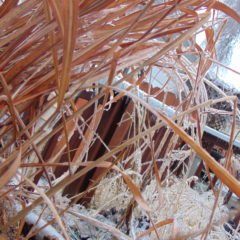I have been collecting horseshoes all of my life, and have a decent amount from Great Britain. The shoes from this area are much easier to date for me, as there is more written documentation about shoeing practices, much more research has been done, and I have a couple of excellent research books on them. One of the books that I have found is ‘Old Horseshoes’ by Ivan G. Sparks.
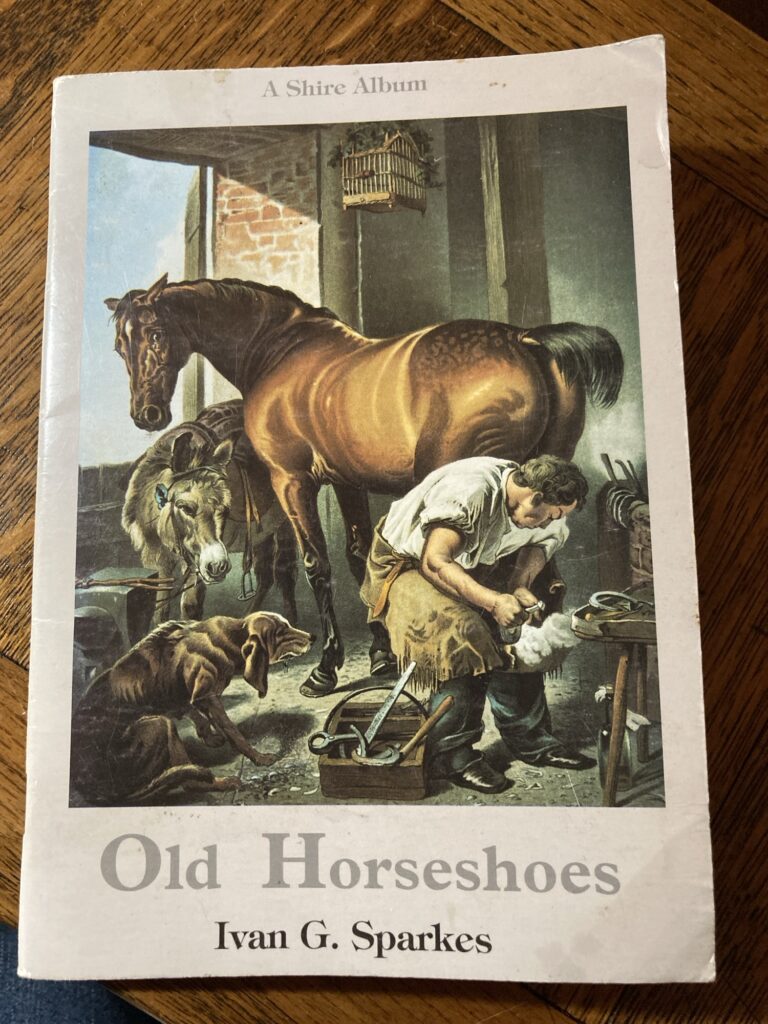
Another excellent book is ‘The Medieval Horse and its Equipment’ by the Museum of London. The Editor, John Clark, categorizes the different types of shoes a little differently than Ivan Sparks, but gives them roughly the same time periods. Today I am going to focus on the Guildhall shoe (according to Ivan Sparks) or Type 4 (according to John Clark).
Another great source is the Museum of London’s website. They have many photos of medieval shoes and their approximate dates. I often quiz myself on trying to date them according to what I have read in books, and use their shoes to help identify some of my own more puzzling examples.
The Guildhall shoe, according to Ivan Sparks, has a rounded outer edge and an arched inner edge. This shoe is a good example:
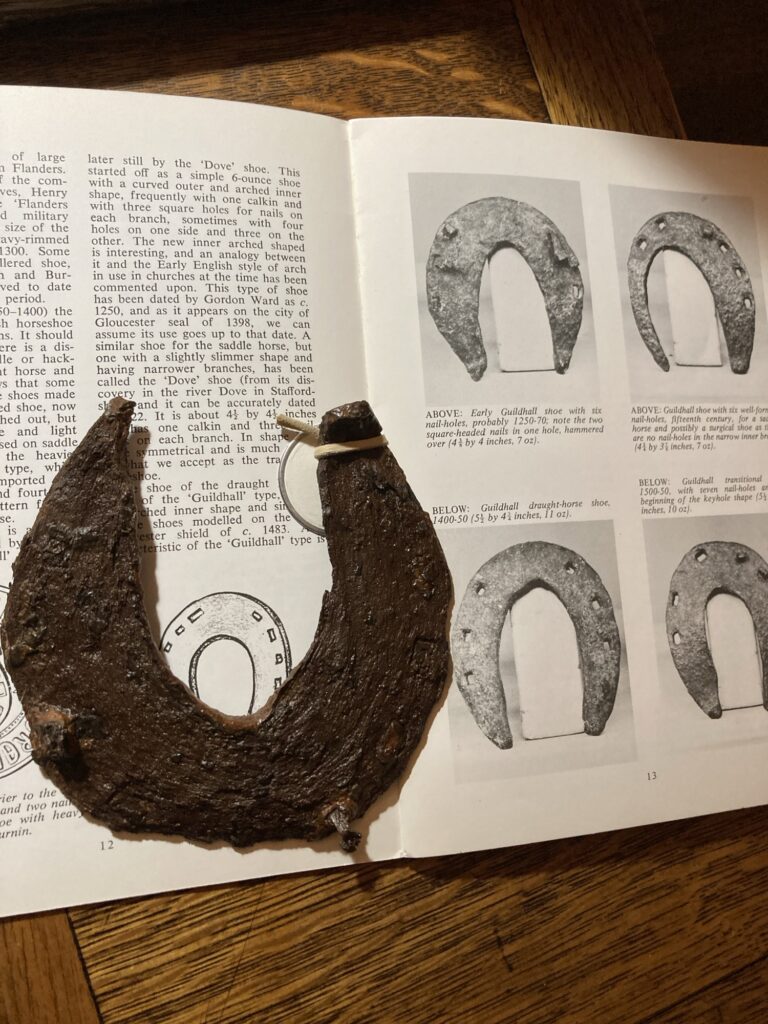
These shoes gained popularity around 1350 AD to accommodate the larger breeds of horses being imported to the area. They gradually were replaced by keyhole shoes by around the 1600’s. According to John Clark, they were often found in the 14-15th centuries (around 13-1400’s).
They tended to have just one calkin, but they could have two as well. They sometimes had 6 nailholes, and sometimes 7 (3 on one side and 4 on the other). The shoes are fairly small, maybe about the size of today’s average riding horse. Certainly not as large as today’s drafts!
Below are some samples from my own collection. They have been cleaned so I can more easily identify the number of nailholes, special features, etc.
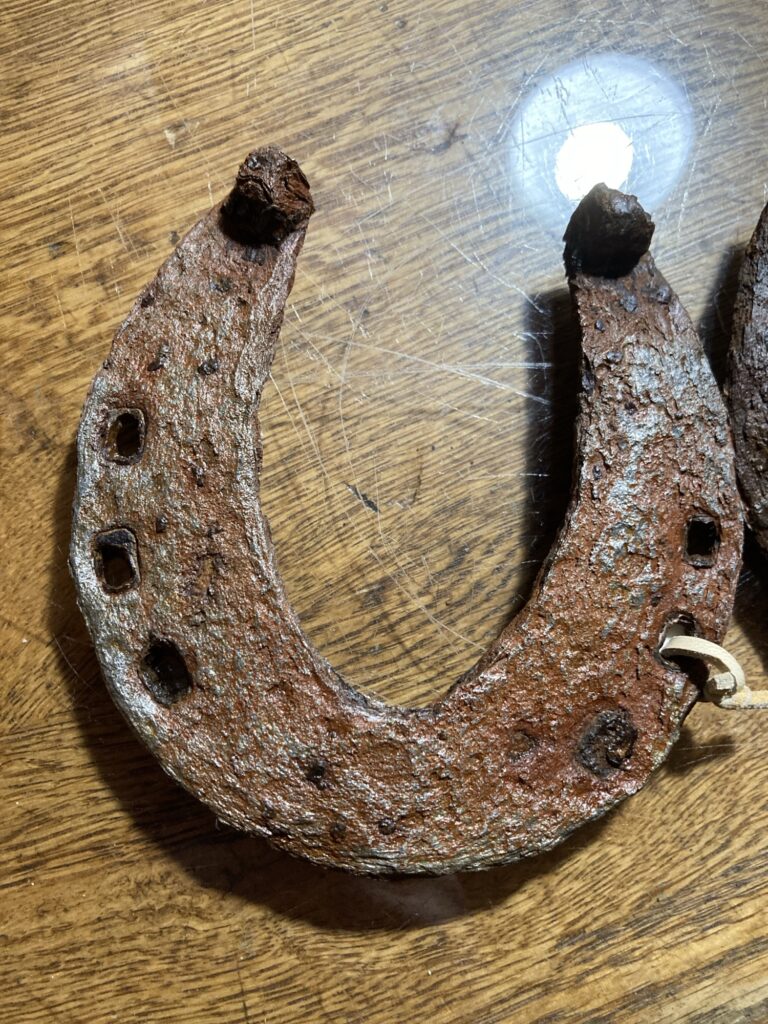
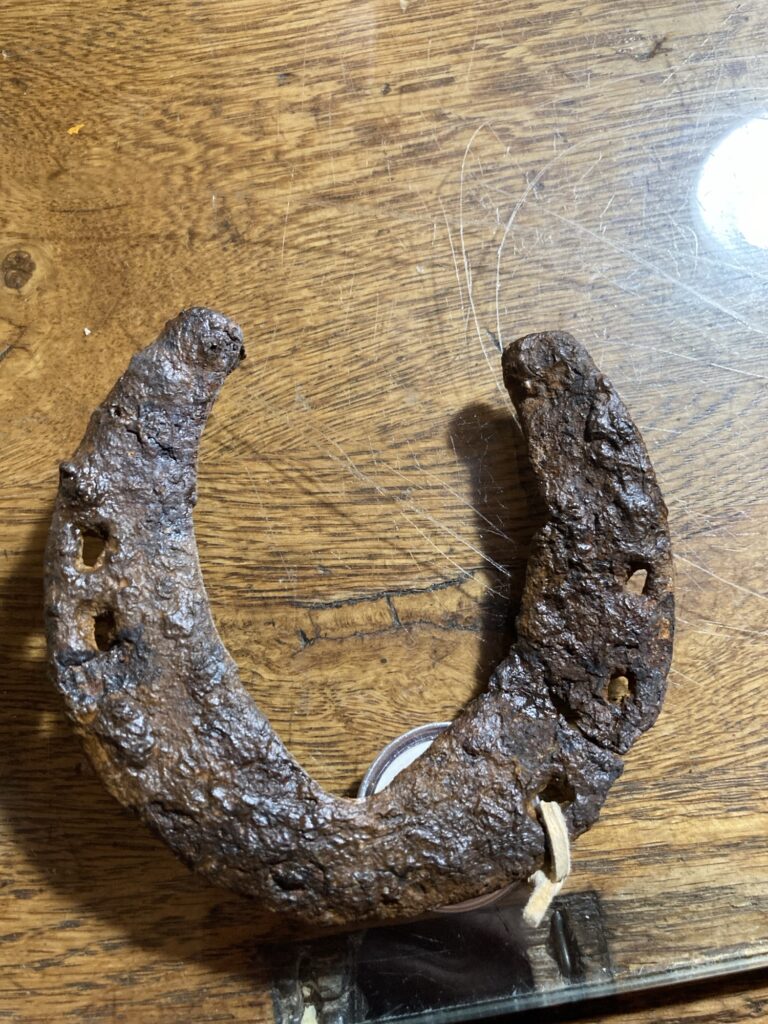
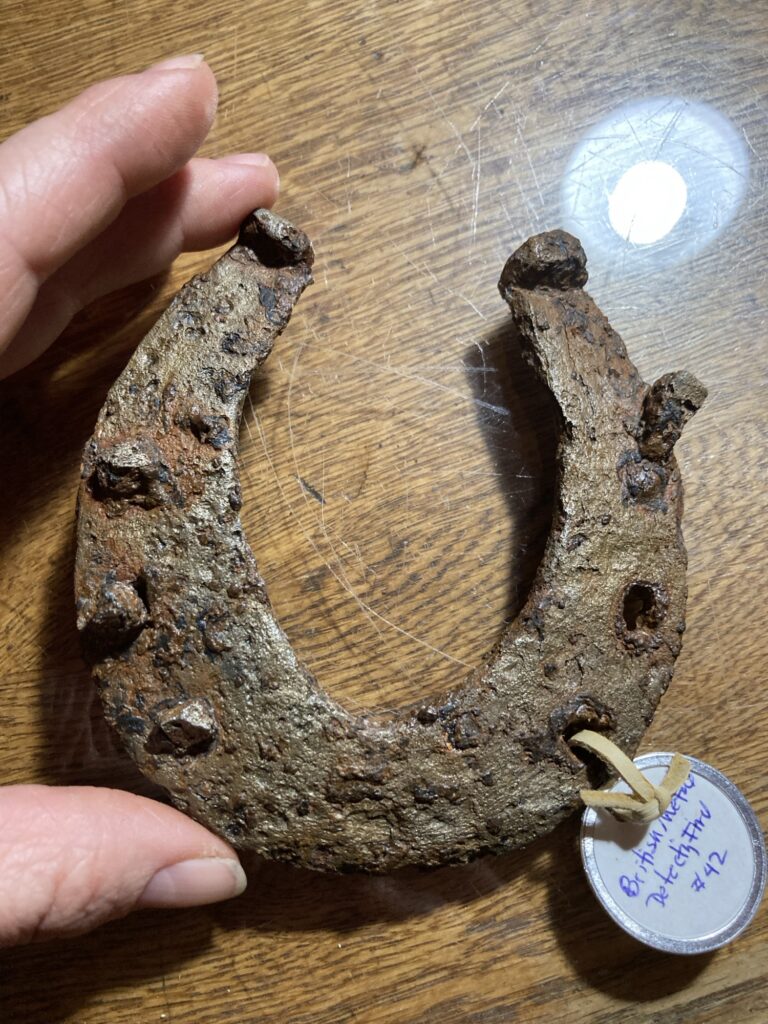
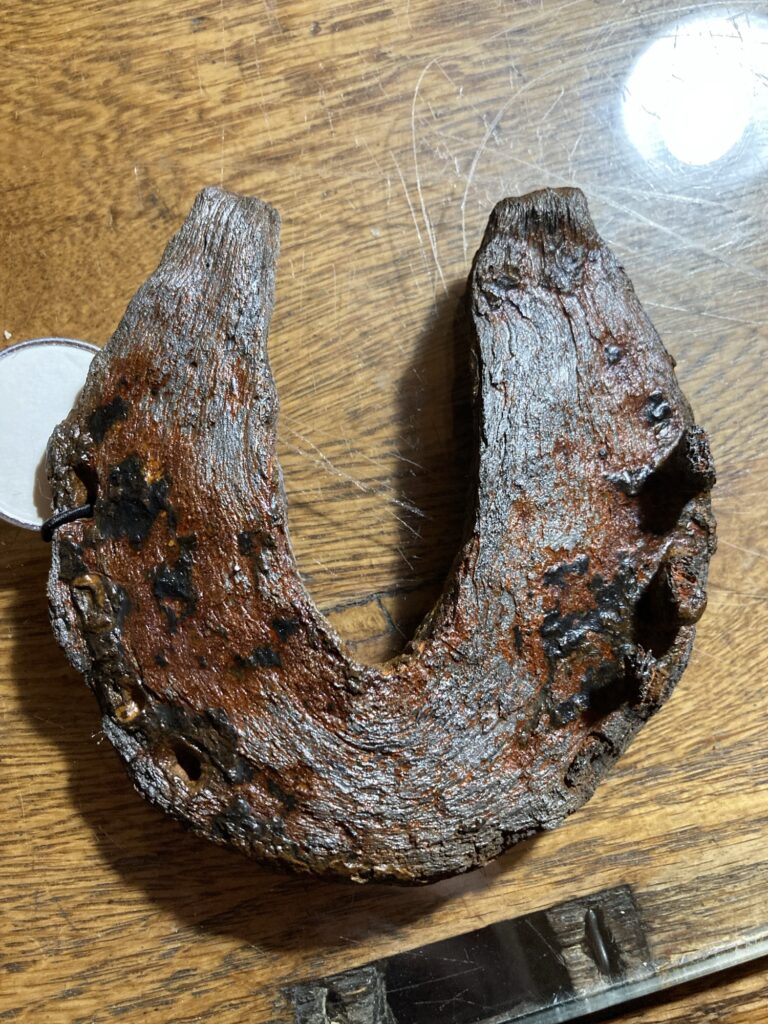
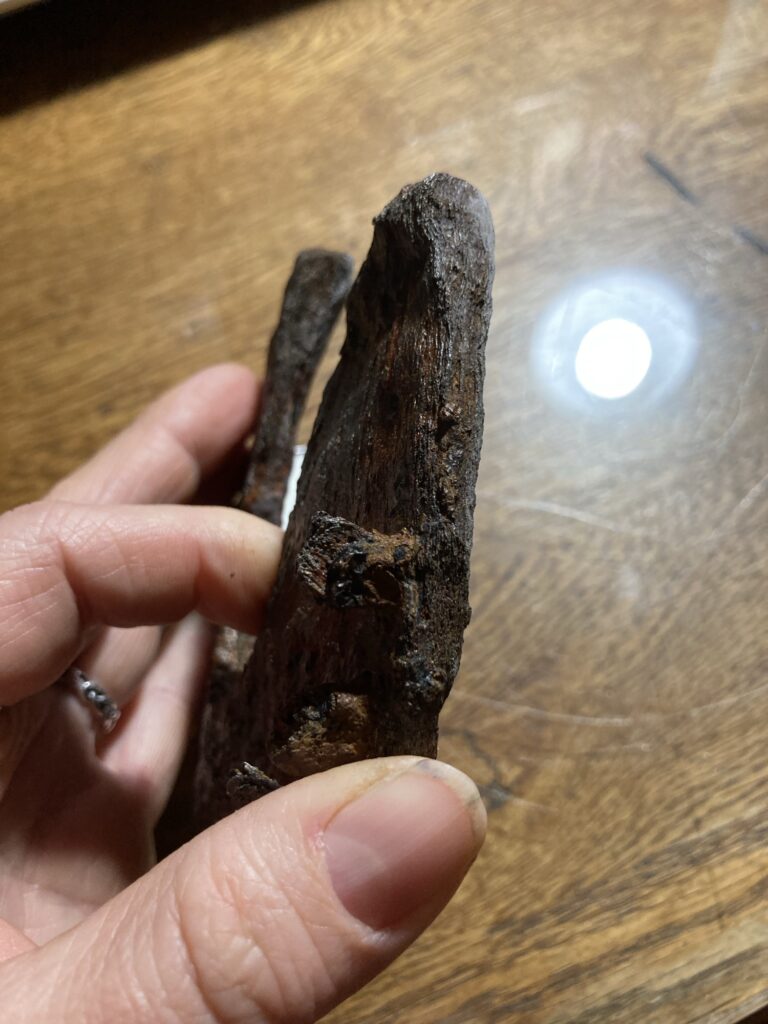
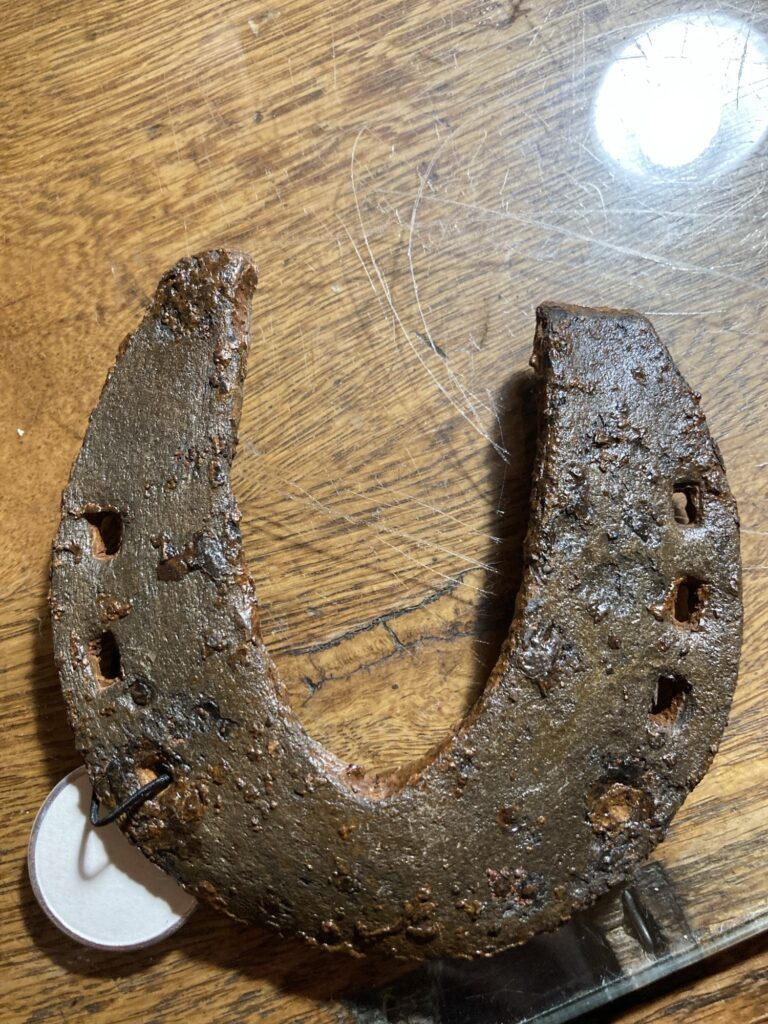
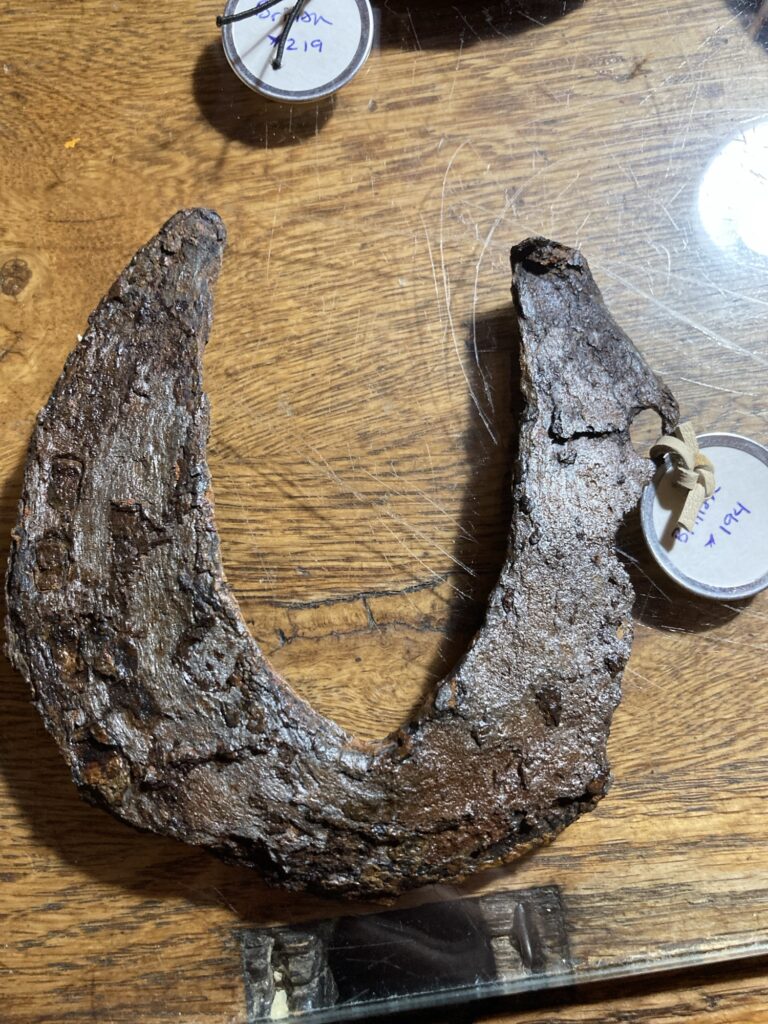
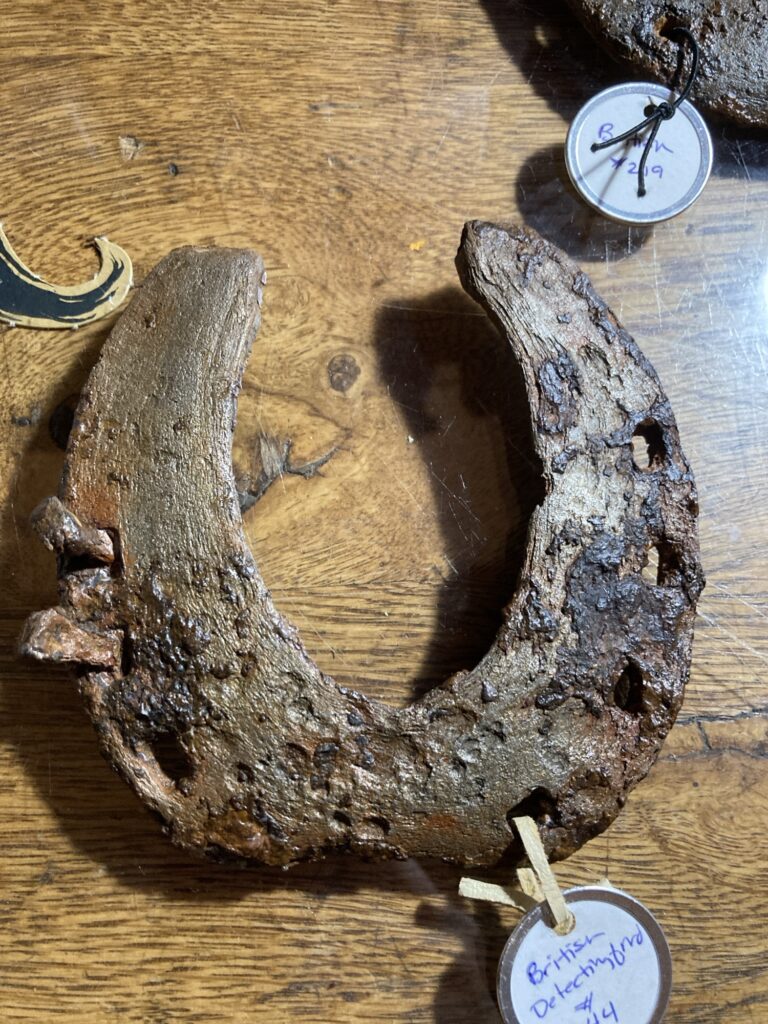
Wouldn’t it be wonderful if these shoes could talk? To hear all of the stories of the horses that once were, what their lives were like, and all that occurred in the hundreds of years that these shoes were under ground!
